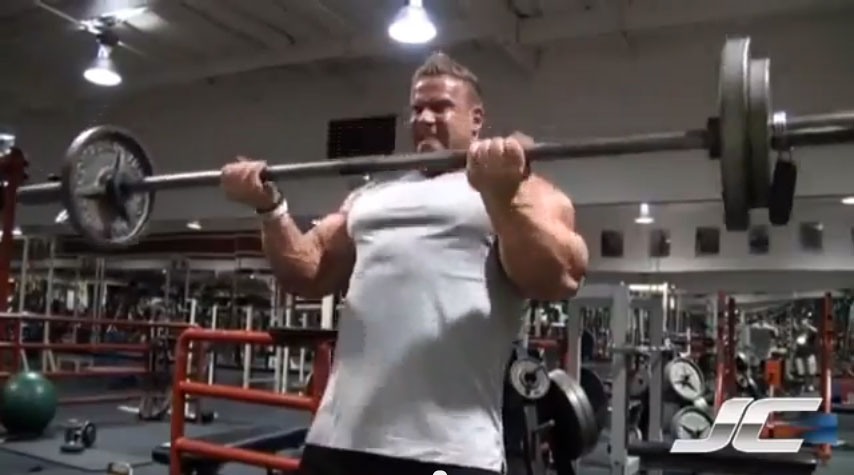We’ve all seen the young trainers in the gym, standing in the squat rack with an Olympic barbell, doing bicep barbell curls. Well, not exactly bicep curls. More like, “back heaves”. They add 40 pounds more than they can handle to the bar, and then use an extremely amusing amount of body English to bring the barbell from belt buckle to chin.
Some cheating is beneficial in bodybuilding training. The goal of bodybuilding training is to stimulate the muscle group by filling it with as much oxygen- and protein-rich blood as possible. So if improper form at the end of a set helps the bodybuilder to push more blood into the region, it’s a positive thing. However, the question is, when does a little cheating become too much? When does the body English and swing result in the muscle not being stimulated enough for the exercise to be effective?
The barbell curl is the most popular – and most effective – exercise for training the biceps. Standing with the feet shoulder-width apart and grasping the barbell with an underhand grip and shoulder width, the trainer slowly curls the bar out and up in a smooth arc-like motion. At the top, he should full flex the biceps, and then slowly lower the weight. The elbows should remain stationary. There back should have no swing. The legs shouldn’t move. The entire brunt of MOST of the exercise should be born by the biceps muscles.
Once the 5th, 6th, 7th or 8th reps pass, the arms are often engorged with blood and lactic acid. No more curls can be achieved using proper form. Failure has been reached. At this point, the trainer can find additional results by training beyond failure. On the last 2 sets of an exercise, attempt to complete 1-4 additional repetitions of the movement by using just a bit of swing to overcome that ‘hump’ that occurs on the upward arc, about halfway up. This failure point would typically end your set. However, by using a bit of momentum and swing to get past it, you are able to complete several additional repetitions, bringing even more blood into the region.
The key to remember is that cheating should only be employed after failure has been achieved using repetitions with good form. Cheating should not be used in every exercise, every set, or you’d quickly burn out due to over stimulation to the central nervous system. Keep is as a handy tool in your repertoire for additional stimulation to the biceps muscle once the body can no longer complete reps in good form.


1 Comment
Pingback: Bodybuilder Set for National Cookery Success - News - BuildeRoid